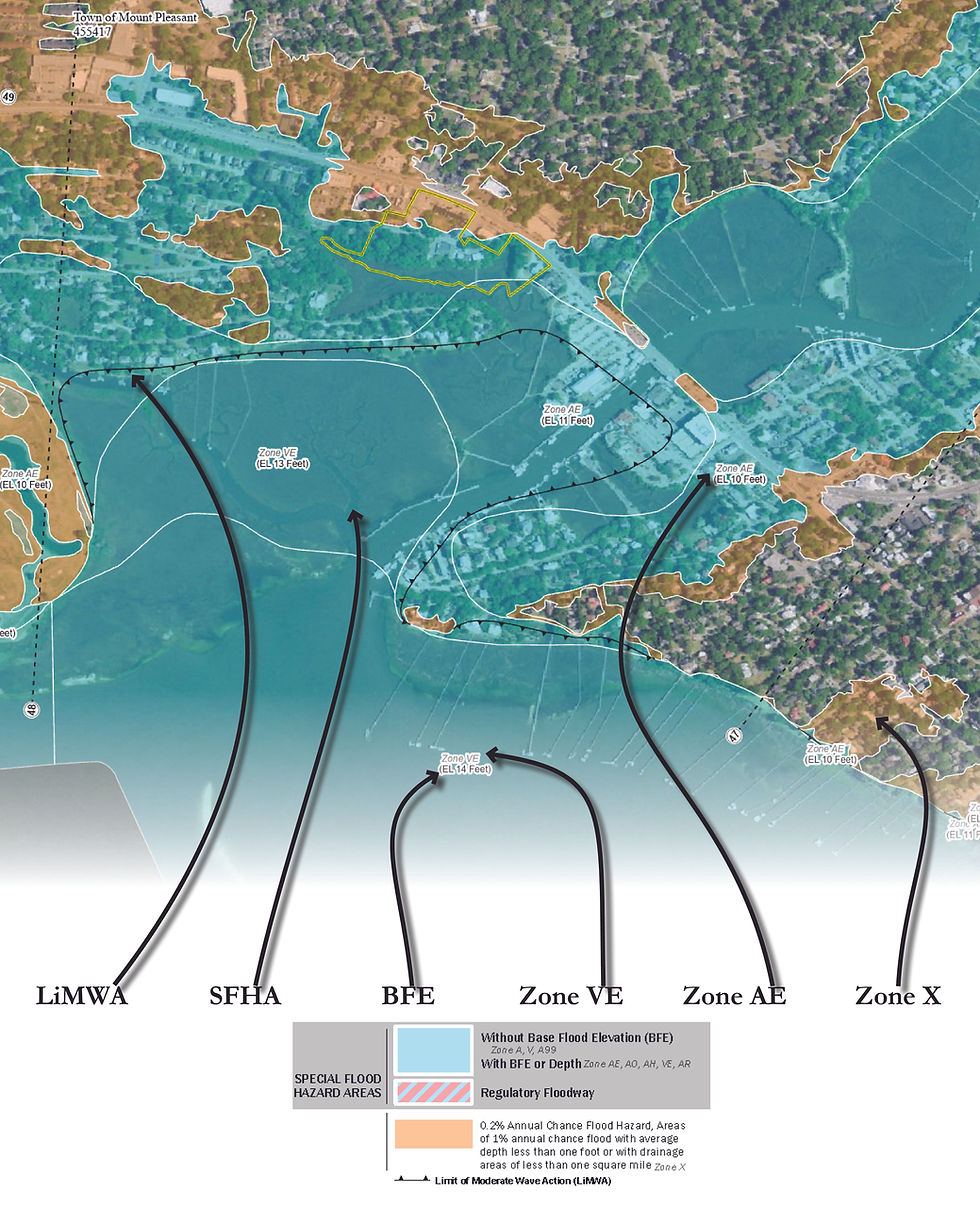Living Above the Flood: A Guide to Charleston Flood Zones
- Spencer Hough

- Sep 17
- 3 min read
Updated: Sep 30

Charleston’s charm comes with a challenge: water. From tidal flooding to storm surge, where and how you build in the Lowcountry is shaped by flood maps. These maps are more than lines on paper—they dictate how high your first floor must sit, which materials can be used, and where systems like HVAC and electrical equipment belong.
If you are planning to buy, build, or renovate in Charleston, understanding your flood zone is the first step toward resilience. At Perched Architecture, we design custom homes with flood protection, elevation, and long-term durability built in.
Why Charleston's Flood Zones Matter
Flood zones influence more than construction. They affect:
Safety — protecting families from rising water.
Investment — stronger homes retain value and sell faster.
Insurance — premiums depend on risk level and compliance.
Homes in AE or VE zones almost always require flood insurance with a mortgage. Properties in Zone X often do not, though some owners choose coverage for peace of mind.
Designing with foresight means a home that lasts longer, insures cheaper, and resells stronger. In Charleston, elevation is not a luxury—it’s resilience written into the structure.
Understanding Charleston Flood Maps
On FEMA maps, properties fall into specific zones. Each one carries different requirements:
LiMWA (Limit of Moderate Wave Action): Marks areas where waves of 1.5–3 feet are expected during a base flood. Even if the zone is labeled AE, properties seaward of this line must meet VE standards with stronger foundations and breakaway walls.
SFHA (Special Flood Hazard Area): Includes all high-risk zones (AE, AO, VE). Properties here must meet elevation requirements and almost always require flood insurance.
BFE (Base Flood Elevation): The minimum height water is expected to reach. What matters is how this compares to your site’s elevation. For example, if your ground is 8 feet and BFE is 13, your finished floor must sit at least 5 feet higher.
Zone VE: The most hazardous coastal zone, where waves over 3 feet are expected. Homes here must be built on pilings or deep foundations, with lower walls designed to break away.
Zone AE: Areas where rising water is expected but wave force is less severe than VE. Many AE homes in Charleston still follow VE standards for added safety.
Zone X: FEMA’s “minimal risk” zone. Insurance is usually not required, but some owners maintain coverage for peace of mind.
Building in a Flood Zone
Every zone has rules that shape how homes can be built:
AE Zones — Homes are often raised on slabs or piers. Nearer to water, AE sites are detailed more like VE, with pilings, open lower levels, and breakaway walls.
VE Zones — Require pilings driven deep into soil to resist waves, scour, and lateral forces. Lower walls must break away without damaging the structure.
Flood Vents — Required in enclosures below the flood line to equalize water pressure.
Materials — Anything below BFE must be flood-damage resistant.
Systems — Mechanical and electrical equipment must be placed safely above the flood line.
Buying or Renovating in a Flood Zone
If you are considering property in Charleston, the flood map matters as much as the floor plan.
Check FEMA Maps before purchase. AE and VE carry very different requirements than X.
Think Ahead to Renovations — Major remodels in high-risk zones may trigger elevation requirements. Smaller projects may still be restricted.
Ground Floors Are Not Living Space — By code, areas below BFE are for parking, storage, or access only. Finished spaces here can be a liability.
The Perched Approach
At Perched Architecture, we bring deep expertise in flood-resistant design. From elevated foundations to coastal detailing, we ensure homes are designed for Charleston’s flood zones, whether AE, VE, or beyond the LiMWA line.
We believe resilient design is not only about code compliance, it’s about protecting families, preserving investments, and ensuring homes remain part of Charleston’s future.
If you’re planning to build, renovate, or buy in a Charleston flood zone, let’s talk. We’ll guide you through the maps, elevations, and requirements so your home is safe, insurable, and built to last.




Comments